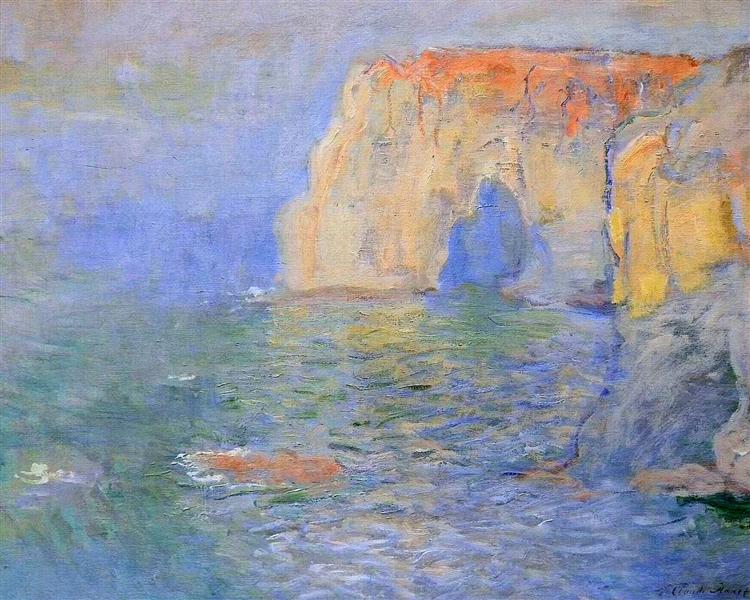Description
Manneport - Water reflexes, painted in 1885 by Claude Monet, represents one of the most emblematic works of the impressionist movement, which is characterized by its focus on light, color and ephemeral visual perception. This painting captures the magnificence of the Norman coast, specifically the rock formation of Manneport, an area that was fascinated for Monet and other contemporary artists.
The composition of the work reveals a delicate balance between the natural elements: water, rocks and sky. Monet is immersed in the representation of water, reflecting a palette that evokes the tranquility of the scene and the play of lights that is reflected on the surface. The bluish and greenish tones of water combine with the soft brushstrokes that create a sense of movement, giving life to painting. The artist achieves a visual transposition of the landscape through the reflexes that are distorted in the water, a distinctive feature of the impressionist style that emphasizes the perception of the moment and the immediacy.
Observing the work, the spectator meets rocks that emerge from the water, delineated with earthly tones that contrast with the soft luminosity of the water. The representation of the rocks in the foreground generates a sensation of stability and anchor, while the bottom in lighter tones suggests an atmosphere of serenity. Monet uses the “loose brush” technique to portray both rock textures and water fluidity, which highlights its mastery in capturing the essence of nature constantly changing.
It is interesting to note that in Manneport - water reflexes there are no visible characters, which allows the viewer to focus on the interaction between the elements of the landscape. This absence of human figures can be interpreted as an invitation to contemplate the grandiosity of nature itself, a recurring theme in the work of Monet, who often sought to evoke the immensity of the environment and its emotional impact on the human being.
In terms of context, this painting was created during a period in which Monet was dedicated to exploring the effects of light and color in various natural conditions. Manneport's choice as a subject reflects the artist's interest in the maritime landscape and in the wealth of his color, and it is interesting to point out that he formally belonged to a series of works that represented this region of Normandy. Monet, along with other contemporary painters who explored the same theme, such as Gustave Coubet and Eugène Boudin, contributed to establishing the importance of the region in art history.
The continuous experimentation of Monet with light and color would culminate in its growing praise within the impetuous displacement of art towards modernity. Manneport - Water reflexes is not only a pictorial representation of a place; It is a visual manifesto of the painter's search to understand and represent nature, marked by its intense emotional connection with the landscape. With its innovative technique and its ability to capture the moment, Monet consolidated itself as a master of impressionism, leaving a lasting legacy that continues to inspire the current generations of artists and art lovers.
KUADROS ©, a famous paint on your wall.
Hand-made oil painting reproductions, with the quality of professional artists and the distinctive seal of KUADROS ©.
Reproduction service paintings With a guarantee of satisfaction. If you are not completely satisfied with the replica of your painting, we refund your money 100%.

